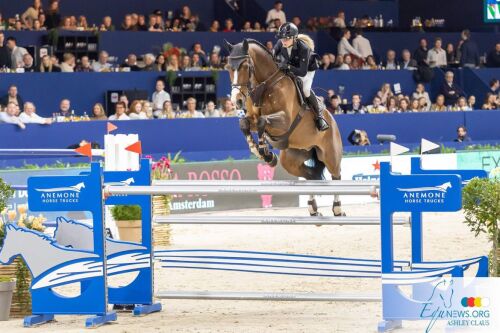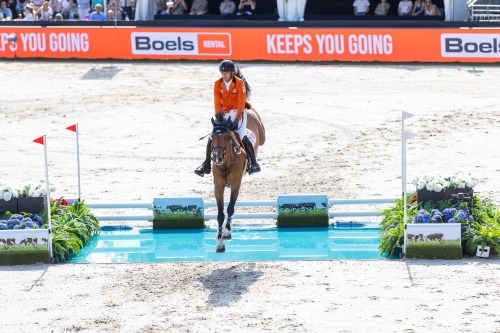Just like cooking a delicious meal with the right balanced ingredients, Bart Manderveld is an expert when it comes down to ‘preparing’ the soil for the footing of the Varberg Summer Horse Show. We find him driving around on the large football pitch in Håsten. First of all, the surface must be smoothed down, then a nonwoven fabric is rolled out and covered in a mixture of sand and fibre. “I work a bit like a chef. It's about having the right balance between all the ingredients and finding the right spices to add to it. Just anything thrown together won’t do,” says Bart Manderveld. He comes from Belgium but travels around the world to lay the ground for horse tracks. It’s funny when you think about the fact that he delivers sand to one of the world's most sand rich countries, Saudi Arabia. “The composition of the sand is important. Desert sand is no good, it is far too heavy for the horses to move on.” He explains by comparing it to a walk on the beach. Where the sand is dry, your feet sink down when walking and it is tough to move. Where the sand becomes wetter, closer to the shoreline where the ground is more solid to walk on but with resilience. “That is how the riders want the surface to be, solid but with resilience and the same feeling throughout the track,” Bart Manderveld explains. The hunt for the perfect mixture took him several months to put together, and he does not reveal where in Sweden he buys the sand but he says that the mixture comes from three different locations. “That’s the hardest part of the job, getting the right mix of sand. Recently, in California, it took four months before I found the right one. If you send me a sand sample, I can tell you with 97 percent certainty whether it will work.” Fibres from Belgium get mixed into the sand. The larger pieces provide more resilience while long, ore thread-like fibres make the surface more stable. It's not just the horses and riders who benefit from his job. After the competition is over all the sand is collected and transported away for storing in anticipation of the next competition. And the ground will serve again as a football field. “It is important that the surface can dry up from below if there is rain.” “But the track can withstand any weather so I'm not worried. For the competition's sake, I hope the sun will be out.” To refer back to the similarities with cooking, Bart Manderveld believes that the track ground, the sand, are the foundations and the key for a good footing.
PROMO: VARBERG SUMMER HORSE SHOW: BELGIAN EXPERT ON THE SPOT
-
categories: Inspiration



